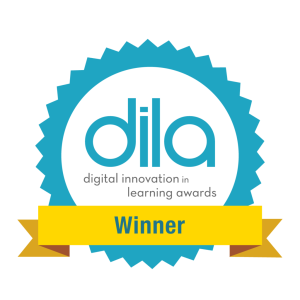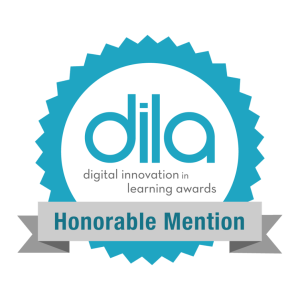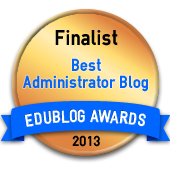Monthly Archives: July 2016
5 Ways to Connect a Class to the World
For the interactive version of this video in TouchCast click HERE.
Teaching the YouTube Generation without providing kids the opportunity to create content would be absurd. However, connecting kids to meaningful learning experiences that include other learners around the world is not always associated with traditional practice (unless you count pen pals). This TouchCast Ambassador video provides a short (3 minute) synopsis of how a class could tap into video as a transformational learning tool.
Disclosure of Material Connection: I’ve been using TouchCast for approximately three years. This year I am partnering with them as a Star Ambassador and paid consultant. TouchCast is a free app and I am not selling anything, but I want this partnership to be clear to readers.
Heads-up: The Adjusting Course blog has a new home. Check it out at www.BradGustafson.com and subscribe so you don’t miss a beat!
What’s Your One?
Have you ever returned from a conference and been asked to name a “take-away” or something you learned?
I recently had the chance to collaborate on a special podcasting project with Theresa Stager (co-host of the PrincipalPLN podcast). We were both at the NAESP national conference in Maryland and presented a session on podcasting together in the Innovation Lab. Click HERE to view the live NAESP podcast.

During the session and live-podcast, we asked school leaders their “one” takeaway. In addition to hearing what conference attendees were learning, we also wanted to model just how easy starting a podcast can be. (Clearly, we needed to spend a tad more time setting up the green-screen lights, but getting over the need for perfection is a big step to actually starting a podcast!)
I’ve always maintained that one of the best ways for principals to provide relevant instructional leadership is to model using relevant communication platforms like face-to-face conversation, social media, and podcasting. A podcast is also a great way to shine the light on the incredible work students and staff do on a daily basis, so there are many reasons to start.
We hope you enjoyed hearing from the inspiring (and brave) school leaders as they shared their “one” conference takeaway. We also hope that you consider trying podcasting as a school or classroom communication tool.
I’d love to hear what your “one” was from NAESP16 in the comments section below, as well as other reasons you’ve used podcasting in your classroom or school.
**Be sure to hop over to this blog’s new home at www.BradGustafson.com for more Adjusting Course goodness. In less than seven seconds you can subscribe and have the blog delivered right to your virtual doorstep.
My Pastor was Right. Again.

So a funny thing happened a few years ago. I was sitting in church and our pastor at the time, Steve Wiens, started talking about neuroplasticity. I’ve always been a big nerd at heart, so I immediately took interest. Actually, I was totally eating the science up and loving every second of it. The truth of the matter is that Steve’s message helped me overcome some gunk in my life, and it’s a message I still carry with me when reflecting on change, innovation, and education.
In a nutshell, here’s what I gleaned from Steve’s sermon. We all have habits, tendencies, or even addictions that have become hard-wired into us. Some of these habits are good (holding the door for others, showering, and saying “thank you” are a few examples). Other habits are not so good. In fact, they can be downright destructive (fill in the blank with whatever unhealthy habit or failed New Year’s resolution you have here). If you’re an advanced learner or high-flyer you’re already connecting my sermon notes to education…but try to live in the moment and bear with me one more paragraph.
Our pastor likened these tendencies to footpaths formed in the snow. (I live in Minnesota mind you, so I hope you’re envisioning a lot of snow and very deep footpaths!) The more we travel a path, the easier it becomes to travel. Conversely, forging a new path can be extremely challenging. The first few times through the snow are always the toughest. In fact, it can be so difficult to take a new path that we might choose to revert down the same old path even when we recognize it is no longer the right direction in our lives.
Now on to the neuroscience of educational change. Creating new neurons involves linking something new to existing schema. (Remember, you can’t do this without a new path.) You’ve got to walk differently, practice, and persevere. So how might we link best practice to innovation in education? How do we connect the two in a manner that is “walkable” for others? What does that path even look like?
I believe that we’ve reached a point in education where we are collectively capable of giving kids more than they are currently receiving. All kids deserve innovative schools and I’m not okay with the fact that not all kids are experiencing this. There’s more work to do!
How do we get rid of some of the educational gunk (a.k.a. past tendencies, habits, etc.) and form some new dendrites? (See what I did there with the dendrites thing?!) I propose that we start by taking the first step. And then the next. Here are a couple examples so that this is not pure hyperbole:
- We know that students deserve redesigned learning spaces that support the 21st-century skills they’ll need…so we should take the first step in making it happen within our own sphere of influence (classroom, school, district, etc.)
- We know that we cannot be the experts of everything, and that connecting with other educators regardless of time/proximity only makes sense…so we should take the first step in helping a colleague on this path. We need to get more people connected so we can better serve our students.
Thinking different requires different steps. Different doing. And it is possible! My pastor was right.
_
Yes! This blog is moving to a new home. Hop over to www.BradGustafson.com to see how the Adjusting Course blog looks “all grown up.” I’d love your feedback on the new site too.













